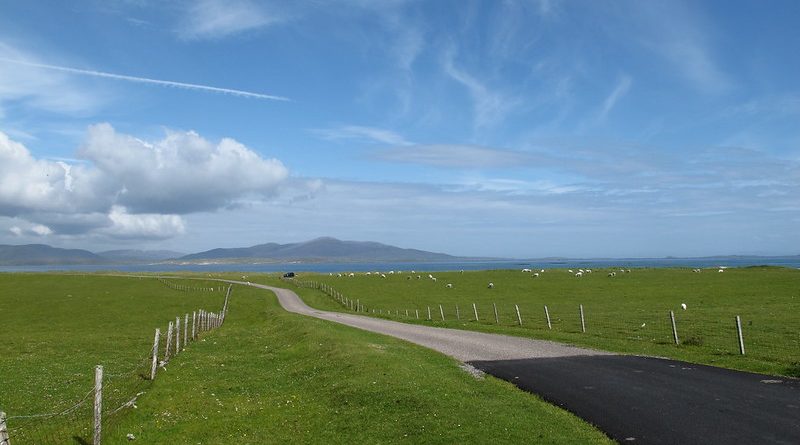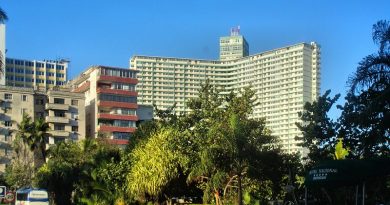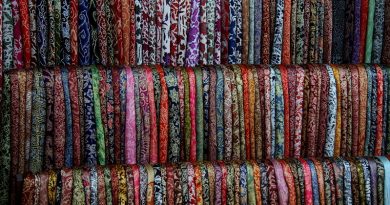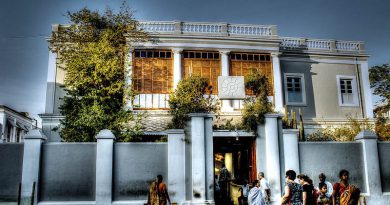The Scottish Hebrides
The Hebrides is an archipelago comprising hundreds of islands off the northwest coast of Scotland. Divided into the Inner and Outer Hebrides groups, they are home to rugged landscapes, fishing villages and remote Gaelic-speaking communities. The Isle of Skye, connected to the mainland by a bridge, has a colourful harbour at Portree and jagged 3,000-ft. peaks in the Cuillin mountain range.
KNOYDART PENNINSULA
This is situated opposite the Isle of Skye. The only way to get here is by catching a boat from Mallaig or hiking for a couple of days across rugged moorland and mountains and sleeping rouch in old stone bothies. This is one of Britain’s most dramatic and unspoilt wilderness areas. Bonnie Prince Charlie is rumoured to have hidden out here after Culloden. At the end of the 18th Century, around 1,000 people eked out a living through crofting and fishing. Land clearances in 1853 began a dramatic decrease in the population and now there are only about 60 people. It has a pint sized post office, a shop and mainland Britain’s most remote pub, The Old Forge.
The main islands of the Inner Hebrides are Skye, the Small Isles (Canna, Sanday, Rhum, Eigg, and Muck), Tiree, Mull, Colonsay, Jura, Islay, and Coll.
The Outer Hebrides, also known as The Western Isles, are made up of more than 70 islands, of which only 15 are inhabited.
High summer months such as July and August tend to be the busiest, while May, June and September are great alternatives when the weather might be drier.
Summer days in the Outer Hebrides are long, giving you more opportunities to make the most of your trip and enjoy all that the islands have to offer.
INNER HEBRIDES
1. SLAY
‘Famous for it’s whiskey trail – the Isle of Islay has six distilleries. Whiskey was introduced here in the 7th century by the Irish.
You can play golf: Some courses are particularly rugged, especially in Islay, where the 7th hole is called ‘Scotts Maiden’ and the player is the same height as the ‘rough’. You can also Go Gliding off the cliffs of Islay.
Fiona Middleton is the seal whisperer of Islay. She wades into the sea and plays the violin until seals come to shore and roll and bask to the sound of her music. She has made it her life’s work to fight for the rights of seals. She is known here as “Fiona of the Seals “
2. JURA
A wild and remote island with dramatic scenery great walks and just one road. There are 200 people to 600 red deer. Paul McCartney’s Mull of Kintyre is here. Jura has it’s own distillery too . It’s supervisor, Duncan Buie is also the fire chief and coastguard. There are often UFO scares on the island which once involved the police, RAF helicopters and fire engines. There is no crime on the island. The house where George Orwell wrote 1984 is here.
3. MULL
Take the steam railway to Torosay Castle, a Scottish baronial creation. Also, Duart castle, one of the oldest inhabited castles in Scotland and the seat of the Maclean clan.Tobermory is a beautiful little fishing port, with brightly painted houses.Eat chocolate at Mull’s chocolate factory.The Police station uses gerbils to shred documents. You can rent rooms in Glengorm Castle on the Isle of Mull.
4. SKYE
This is the most visited of all the islands.
A highlight is Portree’s colourful harbourfront houses and you can visit the otter sanctuary. Kinloch Lodge is run by Lord and Lady Macdonald of the Macdonald clan (Scotland’s largest clan)
5. COLONSAY
This tiny island is one of the most remote of the inner Hebrides. It has been owned by the Howard family for 100 years. The golf course doubles as an air strip. There is seal hunting, otter spotting and amazing bird watching. There is a weekly village ceillidh (meeting, with music and dancing). The islanders grew up with no tv, no electricity and no supermarkets,
6.RAASAY
The Sabbath is strongly observed here. There are signs at playgrounds forbidding play on Sunday.
7. ST KILDA
This is a uninhabited island with a rich history and amazing wildlife. It was inhabited by Gaelic speaking people until their evacuation in 1930. Tourism and church influences in the 19th century assisted in the destruction of the community but the islander’ habit of using fulmar oil on the umbilical cord of new born babies killed about 80% of them. People survived by keeping sheep, fishing, growing crops and climbing the cliffs without boots to catch sea birds, which they boiled and ate. This resulted in a genetic peculiarity – St Kildan men have unusually long big toes. People can only stay on this island if they are doing archaeological or conservation trips. The sea swell makes getting on to the island difficult.
Getting to the Outer Hebrides
There are various ways to travel to the Outer Hebrides, but if you wish to explore the whole chain, then multiple ferry rides are involved.
From the Scottish mainland, you can travel to Barra from Oban, to North Uist from Skye (which is connected to the mainland by the Skye Bridge), or to Stornoway from Ullapool.
While there are daily sailings available, these are limited to once or twice per day, so booking in advance is important if you are taking a car on the ferry. You can pre-book your journeys
Lewis & Harris is the largest island in the Outer Hebrides, where most of the population lives. Stornoway on Lewis is the main town and commercial centre of the islands, home to approximately 8,000 people.
If you have limited time to visit the islands, then Stornoway or Tarbert in Harris might the best bases for you to explore much of the islands and do a couple of day trips.
HARRIS is mountainous and spectacular, with beautiful beaches and isolated crofts
Harris tweed originated here and Marion Campbell is 85 and one of the last to use a hand made wooden loom.




